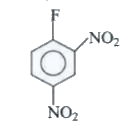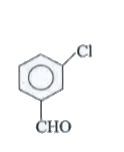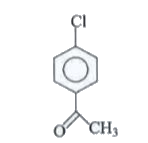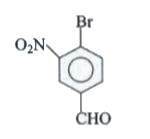Outline the preparation of the following compounds using a nucleophilic substitution reaction : C6H5CH2N=C
To prepare the compound C6H5CH2N≡C (which is phenylacetylene), we can follow a series of nucleophilic substitution reactions. Here’s a step-by-step outline of the preparation:
Step 1: Formation of Toluene
1. Starting Material: Begin with benzene (C6H6).
2. Reagent: React benzene with an alkyl halide (like bromomethane, CH3Br) in the presence of anhydrous aluminum chloride (AlCl3).
3. Reaction Type: This is a Friedel-Crafts alkylation reaction, which introduces a methyl group to the benzene ring.
4. Product: The result is toluene (C6H5CH3).
Step 2: Chlorination of Toluene
1. Starting Material: Use the toluene obtained from Step 1.
2. Reagent: React toluene with chlorine (Cl2) in the presence of ultraviolet light.
3. Reaction Type: This is a free radical substitution reaction, where one hydrogen atom on the methyl group of toluene is replaced by a chlorine atom.
4. Product: The product is benzyl chloride (C6H5CH2Cl).
Step 3: Nucleophilic Substitution with Silver Cyanide
1. Starting Material: Take the benzyl chloride obtained from Step 2.
2. Reagent: React benzyl chloride with silver cyanide (AgCN).
3. Reaction Type: This is a nucleophilic substitution reaction where the cyanide ion (CN−) acts as the nucleophile and replaces the chlorine atom.
4. Product: The product is benzyl cyanide (C6H5CH2CN).
Step 4: Conversion to Phenylacetylene
1. Starting Material: Use benzyl cyanide obtained from Step 3.
2. Reagent: Subject benzyl cyanide to hydrolysis followed by decarboxylation (if necessary) to convert it into phenylacetylene.
3. Reaction Type: The hydrolysis will convert the cyanide group to a carboxylic acid, and decarboxylation will remove the carboxyl group, resulting in the formation of the alkyne.
4. Final Product: The final product is phenylacetylene (C6H5CH2N≡C).
Summary of Steps:
1. Benzene + CH3Br → Toluene
2. Toluene + Cl2 (light) → Benzyl chloride
3. Benzyl chloride + AgCN → Benzyl cyanide
4. Benzyl cyanide → Phenylacetylene
1. Starting Material: Begin with benzene (C6H6).
2. Reagent: React benzene with an alkyl halide (like bromomethane, CH3Br) in the presence of anhydrous aluminum chloride (AlCl3).
3. Reaction Type: This is a Friedel-Crafts alkylation reaction, which introduces a methyl group to the benzene ring.
4. Product: The result is toluene (C6H5CH3).
1. Starting Material: Use the toluene obtained from Step 1.
2. Reagent: React toluene with chlorine (Cl2) in the presence of ultraviolet light.
3. Reaction Type: This is a free radical substitution reaction, where one hydrogen atom on the methyl group of toluene is replaced by a chlorine atom.
4. Product: The product is benzyl chloride (C6H5CH2Cl).
1. Starting Material: Take the benzyl chloride obtained from Step 2.
2. Reagent: React benzyl chloride with silver cyanide (AgCN).
3. Reaction Type: This is a nucleophilic substitution reaction where the cyanide ion (CN−) acts as the nucleophile and replaces the chlorine atom.
4. Product: The product is benzyl cyanide (C6H5CH2CN).
1. Starting Material: Use benzyl cyanide obtained from Step 3.
2. Reagent: Subject benzyl cyanide to hydrolysis followed by decarboxylation (if necessary) to convert it into phenylacetylene.
3. Reaction Type: The hydrolysis will convert the cyanide group to a carboxylic acid, and decarboxylation will remove the carboxyl group, resulting in the formation of the alkyne.
4. Final Product: The final product is phenylacetylene (C6H5CH2N≡C).
1. Benzene + CH3Br → Toluene
2. Toluene + Cl2 (light) → Benzyl chloride
3. Benzyl chloride + AgCN → Benzyl cyanide
4. Benzyl cyanide → Phenylacetylene
Topper's Solved these Questions
- BOOK - ICSECHAPTER - HALOALKANES AND HALOARENES EXERCISE - ISC EXAMINATION QUESTIONS4videos
HALOALKANES AND HALOARENES
- BOOK - ICSECHAPTER - HALOALKANES AND HALOARENES EXERCISE - MULTIPLE CHOICE QUESTIONS29videos
HALOALKANES AND HALOARENES
- BOOK - ICSECHAPTER - HALOALKANES AND HALOARENES EXERCISE - EXERCISE (PART - II DESCRIPTIVE QUESTIONS) (SHORT ANSWER QUESTIONS)94videos
HALOALKANES AND HALOARENES
- BOOK - ICSECHAPTER - GENERAL PRINCIPLES AND PROCESSES OF ISOLATION OF ELEMENTS EXERCISE - EXERCISE (PART-I ( OBJECTIVE QUESTIONS )) (Fill in the blanks)60videos
GENERAL PRINCIPLES AND PROCESSES OF ISOLATION OF ELEMENTS
- BOOK - ICSECHAPTER - ISC QUESTION PAPEREXERCISE - PART-II(SECTION-B)74videos
ISC QUESTION PAPER
Similar Questions
Knowledge Check
- Question 1 - Select One or More
Identify the compounds that will undergo nucleophilic aromatic substitution reaction :
A B
B C
C D
D
Outline the preparation of the following compounds using a nucleophilic substitution reaction : CH3CH2CH2CN
View SolutionOutline the preparation of the following compounds using a nucleophilic substitution reaction : CH3CH2CH2N(CH3)2
View SolutionOutline the preparation of the following compounds using a nucleophilic substitution reaction : CH3CH2CH2CH2NO2.
View SolutionOutline the preparation of the following compounds using a nucleophilic substitution reaction : CH3C≡CCH2CH3
View SolutionOutline the preparation of the following compounds using a nucleophilic substitution reaction : CH3OC(CH3)3
View SolutionWhich of the following compound is most reactive in the nucleophilic aromatic substitution reaction with NaOH ?
View SolutionThe compound which is least reactive among the following in a nucleophilic substitution reaction is
View Solution

